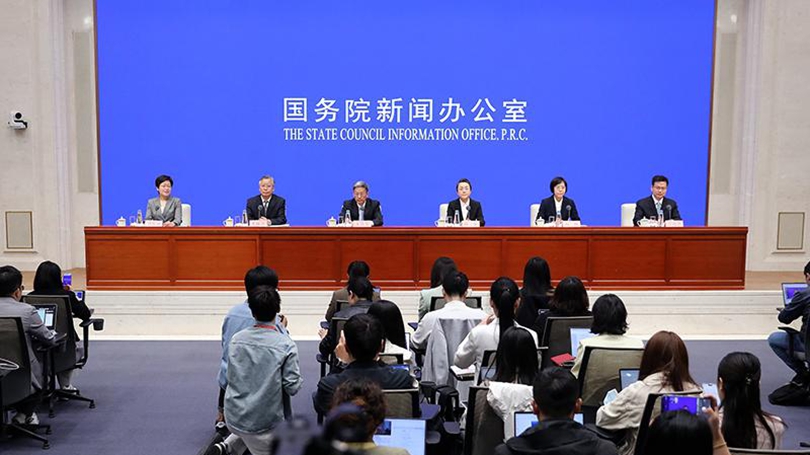Nanfang Plus:
Private enterprises are a vital driving force in key sectors and areas such as technological innovation, foreign trade exports, consumption promotion and domestic demand expansion. The Private Sector Promotion Law clearly supports private economic organizations' participation in technological innovation and major national strategies. How do financial institutions support these areas, and what policies and measures does the NFRA offer? Thank you.
Cong Lin:
Thank you for your question. I'll take this one. For private enterprises in key sectors and critical areas, we focus on sector-specific policies, providing targeted and professional financial services based on industry characteristics.
In high-tech and emerging industries where private enterprises have excelled in recent years, we will work hard to enhance technology-based financial service models. First, we will promote the combination of investment and financing. We are conducting equity investment pilots for financial asset investment companies to support investment in technology innovation enterprises. Currently, 74 private equity investment funds have been established. Additionally, technology enterprise merger and acquisition loans have been launched in 18 pilot cities to support smooth capital circulation for high-tech enterprises. Second, we will innovate the credit enhancement system. We are promoting the construction of a comprehensive pilot zone for the intellectual property financial ecosystem, optimizing policies related to the registration, evaluation, disposal and compensation of intellectual property to support intellectual property pledge financing. In collaboration with finance departments, we have launched a loan guarantee initiative to support technology innovation, providing dedicated guarantees for loans to small- and medium-sized enterprises that are technology-based, high-tech, and use special and sophisticated technologies. By the end of the first quarter of this year, the loan balance of high-tech enterprises nationwide reached 17.7 trillion yuan ($2.4 trillion), a year-on-year increase of 20%. Additionally, we support the commercialization of scientific and technological advances. We have launched two insurance compensation pilot programs — one for the first sets of major technological equipment and another for the initial application of key new materials. These programs have provided more than 1 trillion yuan in risk coverage.
In the fields of foreign trade and consumption, which are primarily made up of small, medium-sized and micro private enterprises, we have designated the foreign trade sector as a priority for the financing coordination mechanism. We have compiled a comprehensive list of foreign trade enterprises and are giving them priority for financing visits and matchmaking. In addition, we have supported exports with short-term export credit insurance. In the first quarter of this year, the insured amount exceeded $240 billion, with significant increase in industries that play important supporting roles in foreign trade, including electronic information, modern chemicals and complete vehicle engineering machinery. We have developed an innovative cross-border e-commerce insurance model to support new forms of foreign trade. This involves guiding insurance companies to develop specialized guarantee products that provide credit guarantees for domestic procurement by cross-border e-commerce businesses. We have increased credit availability across multiple consumer service sectors, including wholesale and retail, accommodation and catering, cultural tourism, education and training programs, and health and elderly care. These measures aim to support the healthy development of private enterprises throughout the consumer services industry.
To encourage private investment, we have partnered with the NDRC to establish a special financing matchmaking mechanism. This has led to the creation of a list of key private investment projects, which we then shared it with banks, guiding them to independently provide appropriate financing services. Some regions have also implemented effective practices and innovative approaches, such as developing dedicated online matching platforms. These platforms allow banks to access project information and use big data to precisely identify projects that align with their credit policies. This has flipped the traditional dynamic from "projects seeking funds" to "funds seeking projects," significantly streamlining the matchmaking process. Thank you.


 Share:
Share: 




 京公網(wǎng)安備 11010802027341號
京公網(wǎng)安備 11010802027341號